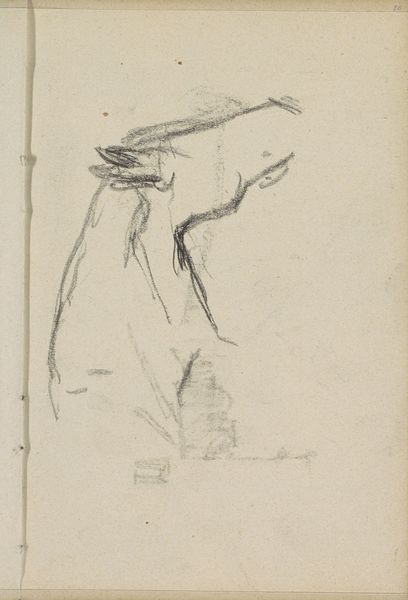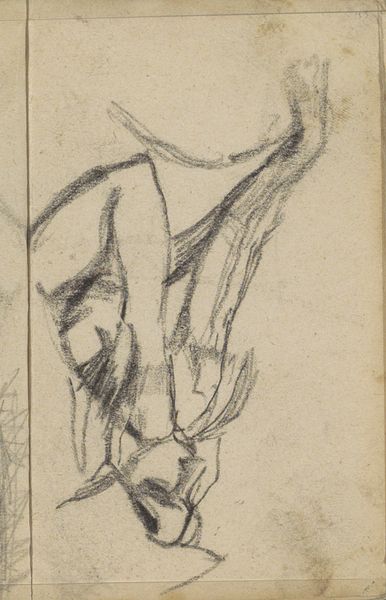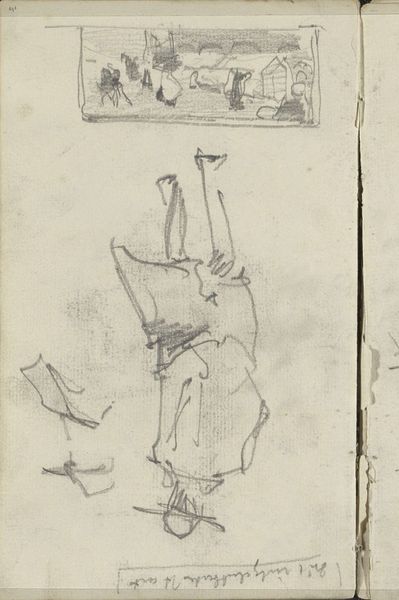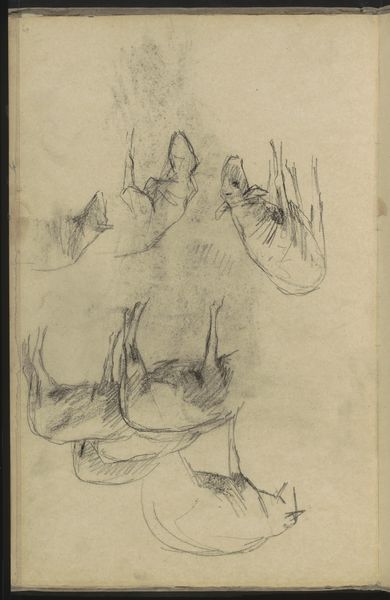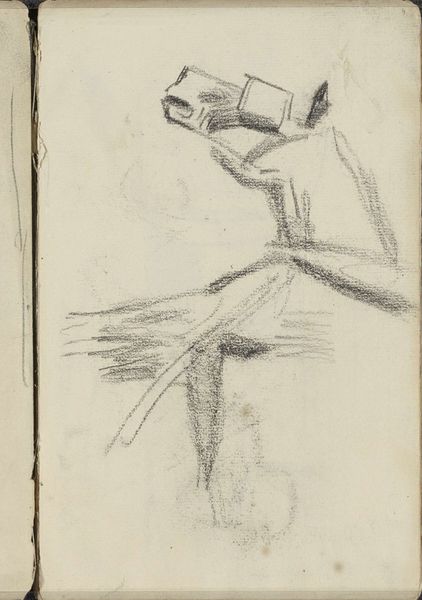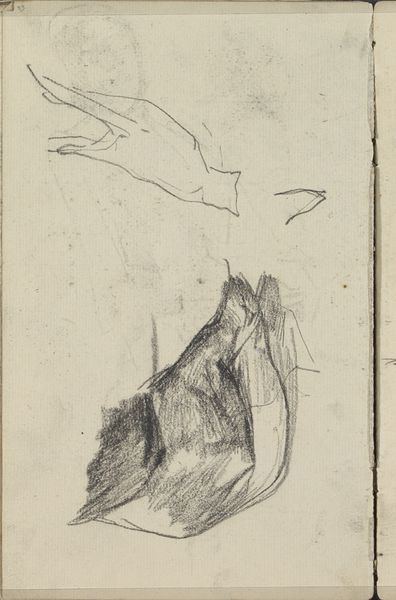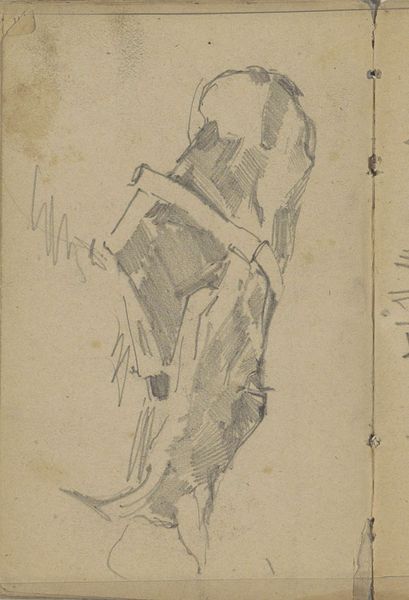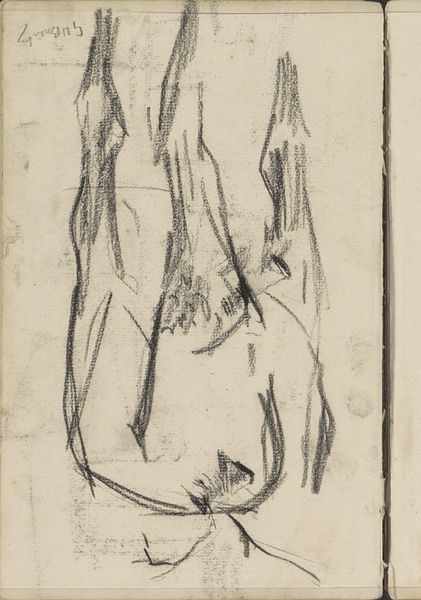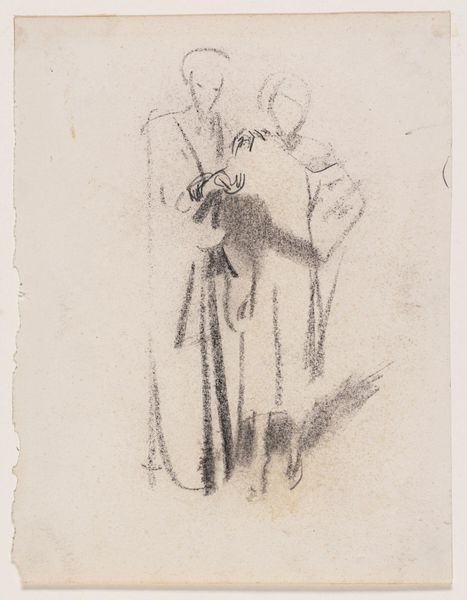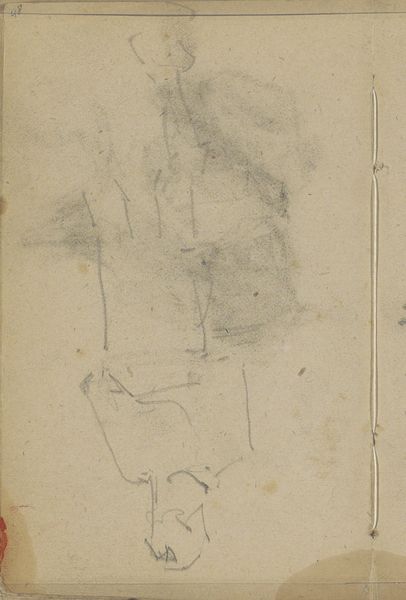
drawing, pencil
#
drawing
#
animal
#
impressionism
#
landscape
#
pencil
#
horse
Copyright: Rijks Museum: Open Domain
Editor: Right, let’s talk about “Paard, van achteren gezien,” or “Horse, Seen From Behind,” a pencil drawing made around 1887 by George Hendrik Breitner, now at the Rijksmuseum. It's strikingly simple. I am initially struck by how it looks kind of vulnerable...like we are intruding on a private moment. What captures your imagination when you look at it? Curator: Vulnerable, yes, absolutely! Breitner’s capturing something essential here, don’t you think? It's a study in movement and form, a fleeting impression pinned down on paper. I feel Breitner wanted to express a personal relationship with the subject of the horse as it moved within a landscape he loved to observe, rather than painting it in a classically, grand, portrait-style manner. You almost feel the chill of the Dutch air, see the dust motes dancing in the light...Or maybe I am just projecting because I once fell off a horse when I was eight... Editor: That image of dust motes is really evocative. So it's less about capturing every detail, and more about the feeling? How does the impressionistic style enhance this? Curator: Exactly! Think about how a photograph captures a subject -- clinical, all the details, and then think how different that is than standing at the very spot where this art was conceived and created. The sketch captures a horse, sure, but also a particular *moment*, light and feeling, too. Breitner’s work here seems so focused on capturing immediacy. I like how honest it is! I appreciate, too, his quick expressive marks creating shadow and form -- what do you think about it? Editor: I see what you mean. It's refreshing – almost like glimpsing into the artist’s own sketchbook. Seeing that vulnerability coupled with the raw talent is really powerful, actually. It makes the horse seem less like an animal and more like a being. Curator: A being with stories we can imagine... and feelings, no doubt. Thank you, your insight really helps make sense of the work in this moment! Editor: Thanks, likewise! I learned a lot about the impressionistic take and, ultimately, Breitner's pursuit of that fleeting moment in his works!
Comments
No comments
Be the first to comment and join the conversation on the ultimate creative platform.
